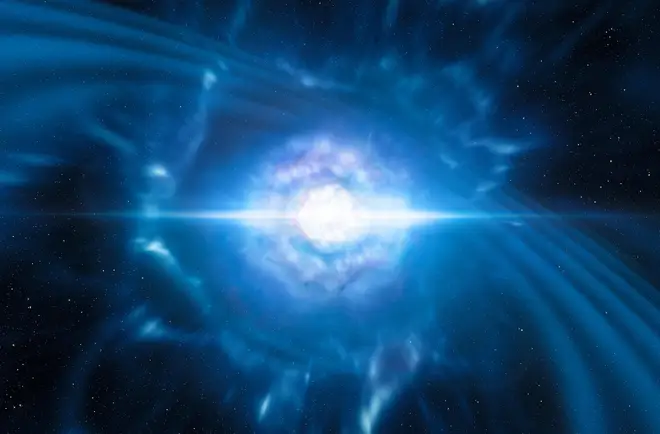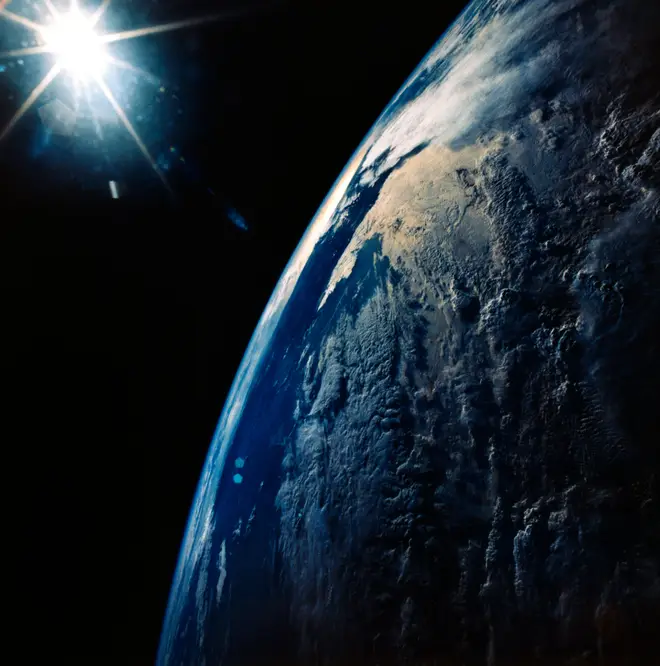
Ben Kentish 7am - 10am
2 November 2023, 16:11

A new study has warned that a ‘kilonova’ could have the power to send humanity into extinction.
Experts have said that a rare space explosion, known as a kilonova, has the potential to wipe out life on Earth ‘for thousands of years’ if it hits within a certain distance.
The study from the University of Illinois Urbana-Champaign said that a kilonova happens when two neutron stars or a neutron star and a black hole collide and merge.
The result? A colossal blast of gamma rays.
While the likelihood of such an explosion occurring is low, it poses a threat to humanity because the radiation emitted by the gamma rays is so strong it can strip electrons from atoms - also known as ionisation.
If these gamma rays were to reach Earth, they could destroy the Earth’s ozone layer and leave humanity vulnerable to the sun’s ultraviolet radiation for thousands of years.
“We found that if a neutron star merger were to occur within around 36 light-years of Earth, the resulting radiation could cause an extinction-level event,' Haille Perkins, a scientist at the University, told Space.com.
Read more: The Beatles release final song 'Now and Then' 53 years after breaking up
Read more: Ear-achnophobia: Woman kept awake by clicking noises finds tiny spider living in her ear

But the only way such an explosion could genuinely harm the planet is if it occurred within 36 light-years of Earth.
Given the nearest known neutron stars to the planet are more than 400 light-years away, the chances of a kilonova wiping out humanity are pretty low.
“The specific distance of safety and component that is most dangerous is uncertain as many of the effects depend on properties like viewing angle to the event, the energy of the blast, the mass of material ejected, and more,” Perkins added.
“With the combination of parameters we select, it seems that the cosmic rays will be the most threatening.”
The study was based on a neutron star merger about 130 million light-years away, which is the only kilonova to have been picked up in electromagnetic radiation and heard in gravitational waves.
It also revealed a further two ways a kilonova could threaten the planet.
First, the jets of gamma rays blasted from the merger, as these are capable of destroying anything in its path within a distance of 297 light-years. Although this ‘hit’ must be direct, which is even less likely.
And finally, when kilonovas travel through space they collide with the gas and dust surrounding stars, which can result in powerful X-ray emissions.

This type of radiation is particularly long-lasting and could damage the Earth’s ozone layer. But this would need to happen within 16.3 light years for the radiation to actually have an impact.
It comes after researchers at the University of Warwick revealed that they had been able to use NASA’s James Webb Space Telescope to study a kilonova for the first time.
Ordinarily, kilonovas are very hard to study due to their rare and speedy nature.
The study revealed that kilonovas create Tellurium, which could not be proven before.
But the overall chances of a kilonova harming earth is much less likely than something like solar flares, asteroid impacts and supernova explosions - so the Earth is safe from kilonovas now.
“Neutron star mergers are extremely rare but quite powerful, and this, combined with the relatively small range of lethality, means an extinction caused by a binary neutron star merger should not be a concern of the people on Earth,” Perkins added.